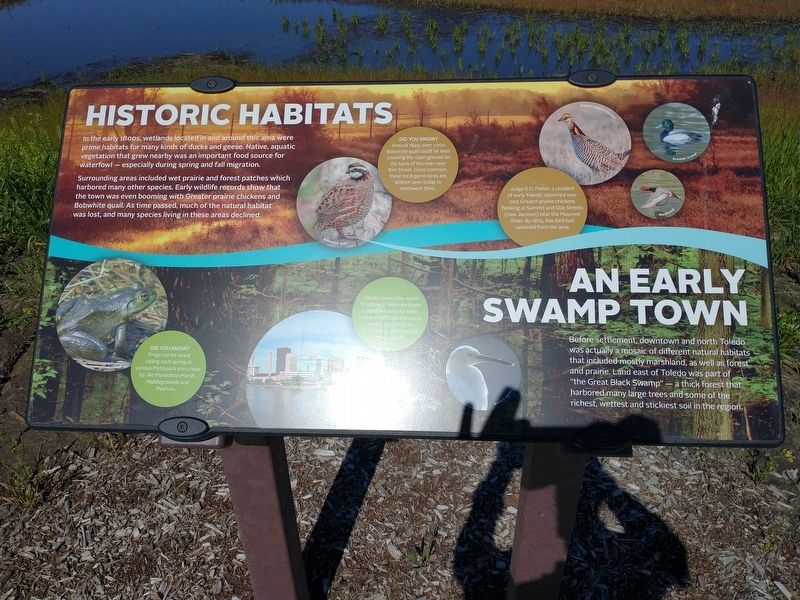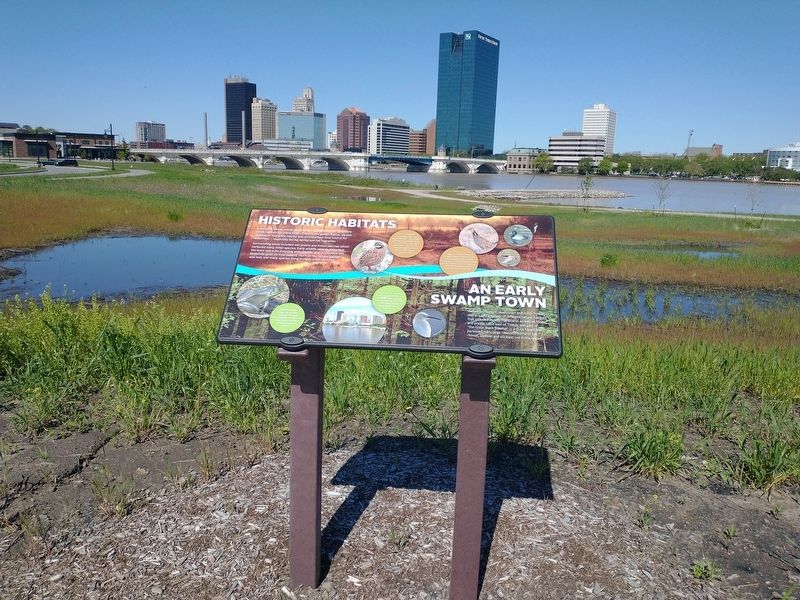East Toledo in Lucas County, Ohio — The American Midwest (Great Lakes)
Historic Habitats
Historic Habitats
In the early 1800s, wetlands located in and around this area were prime habitats for many kinds of ducks and geese. Native, aquatic vegetation that grew nearby was an important food source for waterfowl – especially during spring and fall migration.
Surrounding areas included wet prairie and forest patches which harbored many other species. Early wildlife records show that the town was even booming with Greater prairie chickens and Bobwhite quail. As time passed, much of the natural habitat was lost, and many species living in these areas declined.
Did You Know?
Around 1840, over 1,000 Bobwhite quail could be seen covering the open ground on the bank of the river near Elm Street. Once common, these local game birds are seldom seen today in northwest Ohio.
Judge E.D. Potter, a resident of early Toledo, observed over 500 Greater prairie chickens flocking at Summit and Oak Streets (now Jackson) near the Maumee River. By 1875, this bird had vanished from the area.
An Early Swamp Town
Before settlement, downtown and north Toledo was actually a mosaic of different natural habitats that included mostly marshland, as well as forest and prairie. Land east of Toledo was part of "the Great Black Swamp” – a thick forest that harbored many large trees and some of the richest, wettest and stickiest soil in the region.
Did You Know?
Frogs can be heard calling each spring at various Metropark sites close by, like Manhattan Marsh, Middlegrounds and Pearson.
Toledo earned the name "Frogtown,” because it was a popular haven for large numbers.of frogs and toads that made the local marshlands and swamps their home.
Topics. This historical marker is listed in these topic lists: Animals • Horticulture & Forestry • Natural Features • Settlements & Settlers. A significant historical year for this entry is 1840.
Location. 41° 39.149′ N, 83° 31.338′ W. Marker is in Toledo, Ohio, in Lucas County. It is in East Toledo. Marker is at the intersection of Front Street and Morrison Drive, on the left when traveling east on Front Street. Touch for map. Marker is at or near this postal address: 1349 Front St, Toledo OH 43605, United States of America. Touch for directions.
Other nearby markers. At least 8 other markers are within walking distance of this marker. Great Lakes Water Quality Agreement Established The Maumee Area Of Concern (approx. 0.4 miles away); Vistula Historic District (approx. 0.4 miles away); A Deadly Force (approx. 0.4 miles away); Dual Steering Wheel (approx. 0.4 miles away); A Shaping Force (approx. 0.4 miles away); A Life Force (approx. 0.4 miles away); Great Lakes: A Powerful Force (approx. 0.4 miles away); Stack Emblems (approx. 0.4 miles away). Touch for a list and map of all markers in Toledo.
Credits. This page was last revised on February 4, 2023. It was originally submitted on May 20, 2021, by Craig Doda of Napoleon, Ohio. This page has been viewed 139 times since then and 16 times this year. Photos: 1, 2. submitted on May 20, 2021, by Craig Doda of Napoleon, Ohio. • Devry Becker Jones was the editor who published this page.

